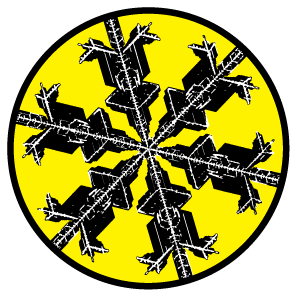Lips that taste of tears, they say, are the best for kissing.
•
• get cranky
• more quotes
very clickable
π day
·
ASCII
·
choices
·
clocks
·
color
·
constellations
NEW
·
covers
NEW
·
deadly genomes
NEW
·
debates
·
emotions
·
famous rat
·
gigapixel skies
NEW
·
hitchens
·
keyboards
·
languages
·
LOTRO
·
photography
·
questions
·
quotes
·
road trips
·
rockets
·
satire
·
spam poetry
·
time
·
tripsum
·
type
·
unwords
·
voids
·
words
·
writing
·
zaomm
language
+ fiction
Dark Matter of the English Language—the unwords
Words are easy, like the wind;
Faithful friends are hard to find.
—William Shakespeare
uncountries
contents
The uncountries are places that don't exist, but perhaps should. If you're starting your own country or are hoping to secede from your current employer (here's looking at you States of the US), you might find this list useful.
The list of uncountries is generated by training on list of 257 countries and territories.
Here's my bucket list of where I'm going next:
- Conchar and Pobacia
- Hzuuland
- New Kain
- Rabibus and Megee Islands
- Sentip and Sitina
- Sinistan
- Tuskia
- Urzenia
- Vontila
in silico flurries
·
Explore the land of Neradia and meet the snowflake named Arenh Jerrus of Bosmen in the wintertime tale In Silico Flurries: Computing the world of snow in Scientific American's SA Visual story about beauty, imagination and machine learning. A collaboration with Jake Lever.
I use unwords generated here to name places and tube stations in Neradia, which is one of the uncountries.
— 4 —
AaniAemo
Ball
Bang
Cada
Caga
Dafa
Dalr
Eira
Eran
Fani
Fato
Gaar
Gace
Hana
Hhen
Iaou
Inor
Kala
Kani
Lain
Lale
Mabe
Mage
Naom
Nare
Pein
Peis
Ragi
Raiy
Saen
Saic
Taga
Tans
Ucan
Uica
Venr
Viam
— 5 —
AalceAanie
Babat
Baica
Caane
Cacae
Daaca
Demga
Eamat
Eanda
Fabta
Fania
Gaane
Gaare
Haemy
Harre
Imina
Imoba
Jacin
Jania
Kande
Kangi
Labua
Laiir
Mabia
Maeky
Nague
Nalgo
Paine
Paiti
Qetia
Qiria
Relat
Renir
Sabga
Sabta
Tabia
Tagan
Ucite
Uenha
Vamar
Vanga
Wiady
Zepek
— 6 —
AamadeAfanen
Baaira
Baggia
Cabomo
Caemia
Darlye
Darzan
Eagero
Eattas
Faitia
Farado
Gabbak
Gabiai
Hauima
Henlia
Icalin
Iganda
Jaigio
Jartar
KSonko
Kabolo
Labopa
Lacuua
Mabana
Mabiak
Nalgin
Nandar
Ougagu
Paiada
Paldol
Rabgen
Ramgui
Saadae
Sabite
Taikua
Takkia
Udapor
Uermin
Vandes
Vangan
Wantia
Wengan
— 7 —
AanigahAgentan
Bagtera
Baliadi
Caathea
Cabibia
Dahmomo
Dalhais
Ebaniar
Eboniat
Falinha
Falttin
Gaereta
Gainana
Haratan
Hasland
Iafercy
Icrotii
Jelican
Jeliwia
Kanfono
Kargice
Lacitia
Laitgoe
Mabaden
Maellha
Naendia
Nalhind
Onbagin
Pabapua
Pagonia
Rarralo
Rarrkak
SEerral
Sabaida
Taateaa
Tahiria
Uagayas
Ujoland
Vaairta
Valonds
— 8 —
AegtomisAeirania
Balcosda
Baltages
Cacbilii
Calnaria
Dargonda
Darirnio
Eatisasa
Eeniicia
Femanlan
Ferlanda
Gacterat
Gadeqtam
Hinaniti
Hndiwiun
Ihibiano
Ilriload
JenogRan
Jenorala
Kcinisan
Keberlan
Laenhuan
Lalostia
Mabdadde
Mabhalin
Naitieta
Naltenis
Oinvalia
Orringia
Pajtbava
Palalian
Qerbacon
Raliutan
Raphenla
SDatelan
Sabmutia
Taigonia
Talbiela
Uginbiam
Uityeate
Vasguace
Velentin
— 9 —
AiwontmiaAlememter
Bawelilia
Beciradue
Cankeslas
Cansiaila
Dacucania
Elorbhiad
Epubhulon
Fredelapo
Gakgasdan
Gantiulan
Hotutuias
Ilallasda
Imroldian
Jendiulia
Jitgodien
Kemadicis
Kerndhand
Lazekatis
Lectarada
MInledian
Mabertima
Nacasnand
Nadordinh
Palcotiis
Panciland
Raecsatas
Rentelisy
SDirniata
Saentolia
Tarhhaldi
Tarnoigan
Untensian
Vantanira
Ventalica
Wensatial
— 10 —
AmodedhaniAndhsituia
Badetcinia
Bandesland
Camegessow
Canoniitia
Damalhania
Denwarinia
Ensriitrui
Eremgosdon
Garilsista
Gebticiita
Hatendacan
Hecrapband
Inteniania
Irrhalipan
Kendestand
Lantunutan
Lenkalland
Macgalland
Malbaninis
Namgelasta
Naniheomie
Pamestitia
Pilimintan
Reboteisia
Ricanlands
Sacgsainas
Samanhalaa
Tenheposda
Tezadtinia
Vagioliale
Veuthalian
— 11 —
AdrelebcimaAmurenoilan
Berniwhpana
Buenaslatda
Catdhtilard
Cerrertoria
Daniacsalon
Eirniatiars
Gaundaniani
Getnicistan
Kiaghbaliaa
Lurolelicam
Madcesladts
Melhellunds
Naporrestan
Niuritantsa
Pebenigisia
Rancitolian
Sarcestalta
Sengrerolia
Varenchales
— 12 —
BendharinsasEwDirireonia
Gouthiidiani
Leumertutire
Locruotarkea
Molganlorgan
— 13 —
Genranisesnan
— 14 —
Buruseezoniseu
And below are uncountries that are composed of compound words. The neural network doesn't always do a good job in capitalization.
— 6 —
Bel Eo
— 7 —
Ar NeliBei Ros
Co Naf,
Es onda
Gob and
Ka -uca
Lex Sen
Mec Len
Se amar
Ton San
— 8 —
Anru RanBaqta Aa
Can Kanc
Dr Belle
Eone Vue
Giinu an
In Gecan
Leen Kon
Mons ald
New Kain
Pobia io
Se Mawan
Tanv Wag
Un Sayth
Vanbo ia
— 9 —
Arte oliaBan Tenka
Cui iepes
Dant Sion
Enu Balra
Fem Feriu
Gia honia
Kamen San
Lan Giane
Ma orepan
Nak Manti
Pat Gamia
Saa hetiu
Tar Itlin
Uem Ladde
— 10 —
Aem LatliaBanh Cerra
Cairt Aani
Dal Vclcin
Ee Riritan
Gaine Sora
Ken Sonras
Laen Lalor
Mal Rilteh
Nib Carean
Paoth enia
Ran borado
Saed Canua
Tamr eatos
Vamin ores
— 11 —
Agim NiideaBaman oshon
Catil Menia
Eil Mitakeo
Freni Niray
Ge Manlando
Jhs Lelland
Ktuct Calia
Leg Saltima
Macan Taman
Namet Gacia
Panan Rerni
Sab Nelieda
Tanc Talind
Vuitan Sera
— 12 —
Aginh ErpataBamen Island
Cancd Samcua
Demun Bondan
Eginan Kerta
Gaicc Iutand
Inanon Gapia
Kanan Island
Lionh Irania
Nameon Raran
Rarve Iitand
Saeci Inlond
Talth Isliin
Unde Narpisa
— 13 —
Aipen SabtarsBab il Rinvee
Caneg Iclands
Dont Calioica
Emanh Naytani
Gaetia esland
Iatin Islands
Jamedh Island
Karch Sartier
Laine Islands
Maind Veltant
Nadtin Launua
Pau Meny ings
Rarciua Oaros
Saini Islands
Tacen Goetian
Urran Teviina
Vopenkb Toppa
— 14 —
Actatiat NaltoBahten Gojilan
Cela Ticgialia
Dototiat Lieda
Eusruuta essan
Fentch Nopyvon
Gaicd Eingasya
Inoral Islands
Jounh Miiticci
Kinera en Cime
Ladten Reperta
Maponit Peraco
Nalton Islands
Pamari eslands
Raqton Beparte
Salnen Islands
Tamokan Asteto
Vekmad Islands
— 15 —
Aepgenin VeliinBemanan Supatii
Caddad Gialerna
Eertiton Ialesd
Fuparrat Asiben
Gamgad Rerradia
Hitetal Iflasds
Jawshanad Meemi
Launiad Istands
Mariadec Geruur
Negend Peregine
Pacabara islans
Rortan Rertaria
Saldusl Islands
Talion Reputlic
Umzenon Islands
— 16 —
Anevares InlandsBangan Aulentand
Caun Nelch afdsa
Dita onu Islands
Eurania Tomontia
Fontican Aviisli
Gaitinl Indipige
Izerlind Reraumo
Jarenran Islands
Krdirtel Cenuria
Lazinan Bestilin
Maltinun Islands
Namnan Sceneilin
Pauran and Rarbe
Ramgiad Cruerava
Sagcas and Narol
Tanin Kenthurian
Urarcan Sudhiety
Vharkiin Ralands
— 17 —
Avaryi BarsselandBinicon Areonieme
Cbiathan Islicssa
Dulial and Carora
Eciircan Rarandin
Gainonial Islands
Jumo iten Serlacd
Kaldtan Fiamusaia
Lattioalan CSubia
Matperacd ofdente
Neni Nicch Dorova
Sanon Perbelobgie
Tengepoth Iscands
Wapu et Lat Miban
— 18 —
Amanes VontenseiarBamntal Asitrcanos
Canomad Rertheqiad
Detuereilin Inlatd
Eeet orwen Seworas
Gantarten Afan and
Kary escin Islands
Lamorho an Lebbati
Mem aynol Islandsi
Nibitayd ordheriio
Oenginh Kinderland
Pacaut Martirlalon
Salend Fe Selerdan
Terviniot Islandss
Vetbited Afobeslen
— 19 —
Agen Tand and SuoniBont Marrtan Toraza
Conchar and Pobacia
Eith Miap Minebanis
Galenta Gueutinanes
Kucaran and Samosea
Loettiruan Atereeti
Mon Varmands Island
Notk Maeg Lemtorban
Pestsian and Kupeta
Sarretonien endanda
Tinba Rand Banciton
Utabtin Anian hulan
— 20 —
Alenra Varin MepublaCenialas and Malalia
Dagic Islands Island
Ekmhula andi Leprico
Garthda and Geekiree
Khin Matib Gebuyston
Liqan and Nantorepua
Maloil Iulands Ncoty
Nanuu Ieean Iymoldir
Samtes iucis Inlends
Teni emctan Sanucias
Urpoe an Rec Sucilia
— 21 —
Borne iarran DevareceCar Rethil Nacinitana
Emytican Geru atgania
Gaind Marchan Islonds
Molticon Cini ondiles
Naund Ramen Arigariar
Pomithan Micrilanimia
Ramtitan Saruan Gaico
Sala am Ton Pameruidi
— 22 —
Arenh Jerrus of BosmenBameedian Is ondorland
Cehc Sulinys henewland
Een Vopitan Nal Linita
Lhinin ondion Gepbalia
Mael Neenan Giernhaiya
Nabein Reba on Mengiou
Paini Islands Firancau
Sagron delompan Hartad
Totiny Iulands Ielands
Urisitan and Suinootia
— 23 —
Coturou an Riu HeniciraKhisyran Inrand Nartala
Larobiel Aruoton Konbia
Nien aucd Can Ceinialan
Portelan II Sarton Salo
Ralat and Senth Sevoini
Saemios Iclands Uslands
Uaceiran Aouth Caitisia
— 24 —
Barukiad Ailond RuibelitGehdip Dirarcan Mepobace
Jimterga dsoras and Isao
Lalendan Ineands Islands
Maunoltan and Oacalialia
Nonmiwen Inlands Islands
Rereanet Tiriitan Tsiupa
Sandhican Iroitan Amania
Ter Setad Giecan Nevhuab
— 25 —
Beib Resrand Aslitan TeraCeirhand osdsiakos Island
Gorareitin Manii Islintso
Manta Vanis Islan Islands
Rabibus and Megee Islands
Suiuis and Sazand quubani
Voeim Rezag Serrath Oaren
— 26 —
Esited Sartini and SelalemMamticia ar Arad Pii eklur
Nayns Margend Bands uarian
Teycantin Tarbanys Islands
Vartoniman Isrond Puenocis
— 27 —
Aamh Inrend Luoniad IsdandsBomitan Jitatgan Depobostan
Liwiren Afiine and Bombalca
Man Vanjin efsecan Aengerus
Niemh Geparlan Fyes Islands
Puri ol afd Huralen Islands
Vorinon Vanir Nanton Feirta
— 28 —
Aumetuanan Meatomiad Aruola-Cemuin Gininad Andenia Randa
Era Largond Monisial Islands
Labitiat ond Matyatl Isdants
Maugaslae Is Gobian Irebnand
Neqta Burwod Neovorian Iesaa
Saritat Roceguriu an Paruiza
— 29 —
Aigak Mo ian bemeqiat IslendsCanied Cipian iar Riben Bitga
Lelitan and Manoakial Islands
MiiigL Gand Mioty Mine Balgan
Nerze Lipal Gemorcan Sgenanii
— 30 —
Birwhla on Sanugial RepontaniaGociten Mariveela Forwe Riuria
Libenan Bandan Cesterep Vercan
Here are uncountries with suffixes common in country names.
—ana
AmynanaBalpana
Congana
Fuubana
Gainana
Hana
Lana
Mabana
Nteradana
Relana
Somuana
Tartana
Vehcana
—and
AnderlandBaphand
Caland
Dhinioland
Feland
Garland
Hasland
Kontand
Laphand
Makdand
Nacasnand
Paspand
Saland
Tgiphand
Ujoland
Vuleslland
—bia
AnrobiaBerbia
Cabibia
Guzbia
Lonabia
Mortcbia
Nirbia
Rubia
Solibia
Terbia
Unabia
—can
BanecanCelican
Deslisacan
Emunecan
Gepuucan
Hatendacan
Jelican
Leucan
Mamescan
Noccan
Pelecan
Shaylican
Tircan
Ucan
Vongican
—dan
BanitisdanDan
Euvadan
Gtardan
Landan
Monmdan
Ringkeldan
Seundan
Tamdan
Unendan
—ica
AniicaBemgbicica
Cinuica
Deyrica
Goitica
Iuperiica
Maltica
Narica
Peotica
Raryica
Sortica
Tektica
Utiuica
Ventalica
—ina
AmigeinaBapbina
Cartina
Decina
Eyllina
Geneceina
Imina
Joriina
Leemina
Maliina
Puiryina
Sainina
Tedrina
—ion
GenysionIranion
Teinhion
—lan
AnualanBinelan
Comelan
Donolan
Eduulan
Femanlan
Gehsyanlan
Iferlan
Kerlan
Larielan
Mecineslan
Nanlan
Otenelan
Papilan
Redallan
Srinlan
Takilan
Vertonlan
—land
AnderlandBandesland
Caland
Dhinioland
Feland
Garland
Hasland
Lenkalland
Macgalland
Namaland
Panciland
Saland
Tuysland
Ujoland
Vuleslland
—lia
BaweliliaConordalia
Dumarlia
Gibalia
Henlia
Ituwelia
Jinalia
Liilia
Melelia
Oinvalia
Rersoalia
Senalia
Tanlia
—lic
ChhalicSulic
—nds
IelandsMelhellunds
Ricanlands
Tulands
Valonds
—nea
AremoneaBicanea
Crinea
Iminea
Lounea
Pananea
Sinhanea
Vinmenea
—nia
ArianiaBamenia
Caminia
Damalhania
Eniania
Fvounia
Gapania
Henia
Imgania
Jhunia
Kcenia
Lebania
Mezania
Neenia
Pagonia
Rernia
Saminia
Tinonia
Urzenia
Vasnia
—rea
EucareaGorerea
Soirea
—ria
AnieriaBunisaria
Comaria
Duria
Gibaria
Kemaria
Lehitiria
Malaria
Peorria
Qiria
Saitria
Tahiria
—sia
AgusiaBantsia
Cenasia
Enisia
Kulisia
Lekssia
Matrisia
Narsia
Pebenigisia
Reboteisia
Sadssia
Tertasia
—stan
BaystanCaistan
Gentiastan
Mastan
Naporrestan
Sinistan
Tengastan
Velstan
—tan
AgentanBaystan
Caistan
Dintan
Eoroitan
Fubotan
Gentiastan
Haratan
Isiretan
Joetan
Kaltan
Lantunutan
Makitan
Nebitan
Pilimintan
Raliutan
Satetan
Teltan
Untuutan
Vasetan
—tar
BurekertarGornitar
Jartar
Lalatar
Sanktar
Temitar
Unitar
—via
BueviaMegisrivia
Martin Krzywinski | contact | Canada's Michael Smith Genome Sciences Centre ⊂ BC Cancer Research Center ⊂ BC Cancer ⊂ PHSA
{ 10.9.234.151 }




